IT’S FIG SEASON!
Not a Hot, Dry Desert, but No Matter
Today’s cool temperatures, along with this overcast sky that’s periodically sneezing raindrops, doesn’t conjure up weather we usually associate with fig harvest. Still, I just returned from the greenhouse with near overflowing handfuls of dead ripe figs.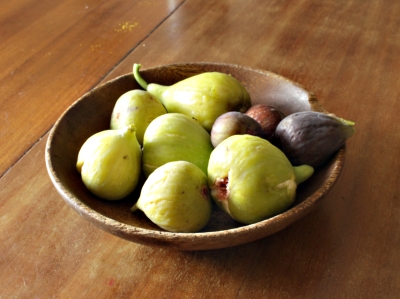
This harvest does highlight one of the many characteristics of figs that makes it possible to grow them in cold climates. The particular characteristic, in this case, is the plant’s rather unique way of bearing fruit. In contrast to a peach tree, which bears fruits on one-year-old stems, or an apple tree, which bears on stems two, three, or more years old, fig tree might bear fruit on new, growing shoots; on one-year-old stems; or on both new, growing shoots and on one-year-old stems.
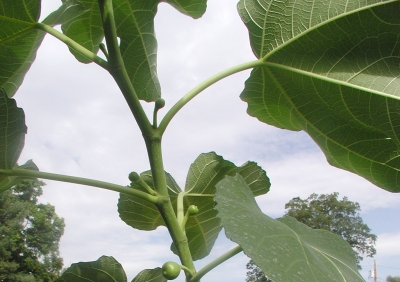
Figs forming on new shoot
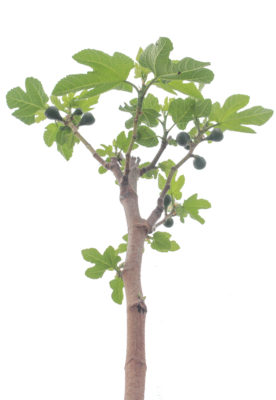
Early figs on 1-yr-old stems
So it’s not necessary to have stems survive winter in order to get a crop the following season. You can cut back stems in order to more easily protect a plant from cold or to make it easier to move a plant to a protected winter home. How your plant bears fruit depends on both the variety and how you prune it.
An Accommodating Plant
Another way figs accommodate us cold-climate-fig-growers is by tolerating a surprising amount of winter cold. Figs are not tropical plant, shivering at temperatures below even 50 degrees Fahrenheit, but subtropical plants, enjoying a certain amount of cold weather and even tolerating temperatures down to 15 or 20 degrees Fahrenheit.
I once stuck some fig cuttings in the ground outdoors here in Zone 5. They rooted, but I eventually got distracted with other plants and forgot about them. They died back to the ground that winter but surprised me by sprouting from ground level the next spring!
Fruits did form along the new shoots, as expected, but those fruits didn’t have time to ripen. The higher up along an old stem from which new shoots originate, the sooner they ripen. A two to three foot stem typically suffices, with fruits ripening on new shoots that originate from near the top of the old stem.
So if you’re growing one of the many fig varieties that bears fruit on new shoots and you’re growing it in a container, make sure to leave one or more two to three foot stems. 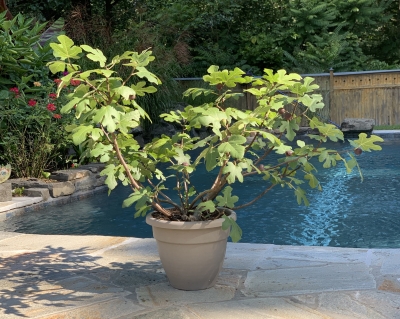 Retain them as permanent trunks, and every year, when the plant is dormant, cut all stems back to that trunk. As growth begins in spring, remove any new shoots arising from below the top few inches of the trunk(s).
Retain them as permanent trunks, and every year, when the plant is dormant, cut all stems back to that trunk. As growth begins in spring, remove any new shoots arising from below the top few inches of the trunk(s).
Prune likewise if you overwinter your plant by some other method such as digging up your plant each fall, bagging its roots, moving it to a cold but not frigid home for winter, then planting it back into the hole in spring. And likewise, again, if you’re opting for overwintering a plant by bending its stems to or below ground level, then covering them with a tarp and mulch for insulation against bitter cold.
(I go into more detail on pruning figs, including pruning for two crops per season, as well as other as aspects of Growing Figs in Cold Climates, which is the title of my book, available from the usual sources or, signed, here.)
Organizing a Fig Plant
I was surprised at today’s fig harvest. True, the plants are growing in a greenhouse, but the temperature within on a cool, cloudy day is about the same as outdoors. I was out of town so that harvest represents a few day’s ripening. But given a sunny day, the greenhouse will warm and ripening will be hastened. (Late news flash from the next day: Yes it has been sunny and today’s harvest of one day’s ripening equals that of yesterday’s harvest accumulated over five days.)
A typical problem with greenhouse figs is too much growth, self-shading, and rotting fruits because of the tangled mess of branches. My greenhouse figs stay neat and trim because I train them as espaliers, which is an ancient method of training plants to two-dimensional patterns that are decorative, formal, and, for fruits, very productive. Espaliered branches all bathe in sunlight and air.
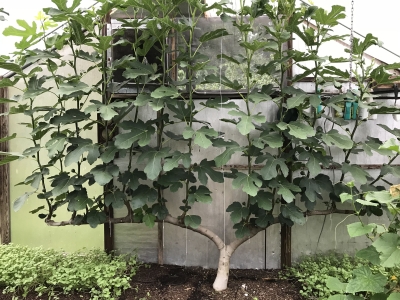
Greenhouse fig trained as espalier
My fig espalier is especially easy to prune. Along the back wall of my greenhouse, I trained one of my fig plants to the shape of a low, branching T. Off the top of the eighteen inch high trunk grow horizontal arms, called “cordons,” each running in opposite directions parallel to the ground and to the wall. In early spring, new shoots appear. I retain upright shoots originating about eight inches apart along the cordons; all other shoots are removed.
Major pruning takes place at season’s end. All that’s needed is to cut back any new shoots developing along the trunk and to cut every vertical shoot down to the cordon from which it sprang. Once a cordon has grown the desired length, I cut all new growth from its tip back to its origin for that season. That’s it!
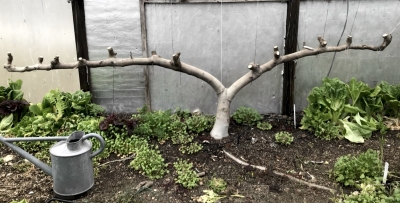
Pruned espalier fig
Because new shoots originate some distance from the roots — the distance being up the trunk and at various places along the cordons — ripening begins earlier than if the plant had been cut back more severely. (I’m experimenting with growing espaliers outdoors, trained at or below ground level, and covered, as protection from winter cold.)
Right now, figs have formed up and down along those vertical shoots, ripening more or less sequentially from the bottom up. Ripening will continue as long as warmth and sunshine allow.
(I will be giving a free presentation on “Growing Figs in Cold Climates” this Saturday, September 30, 2023 at the Woodstock, NY Library at 5 pm.)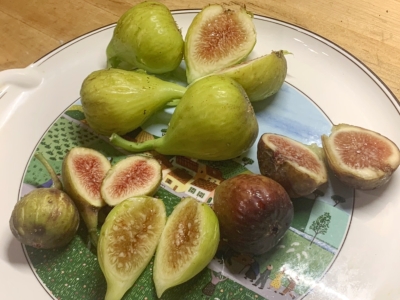

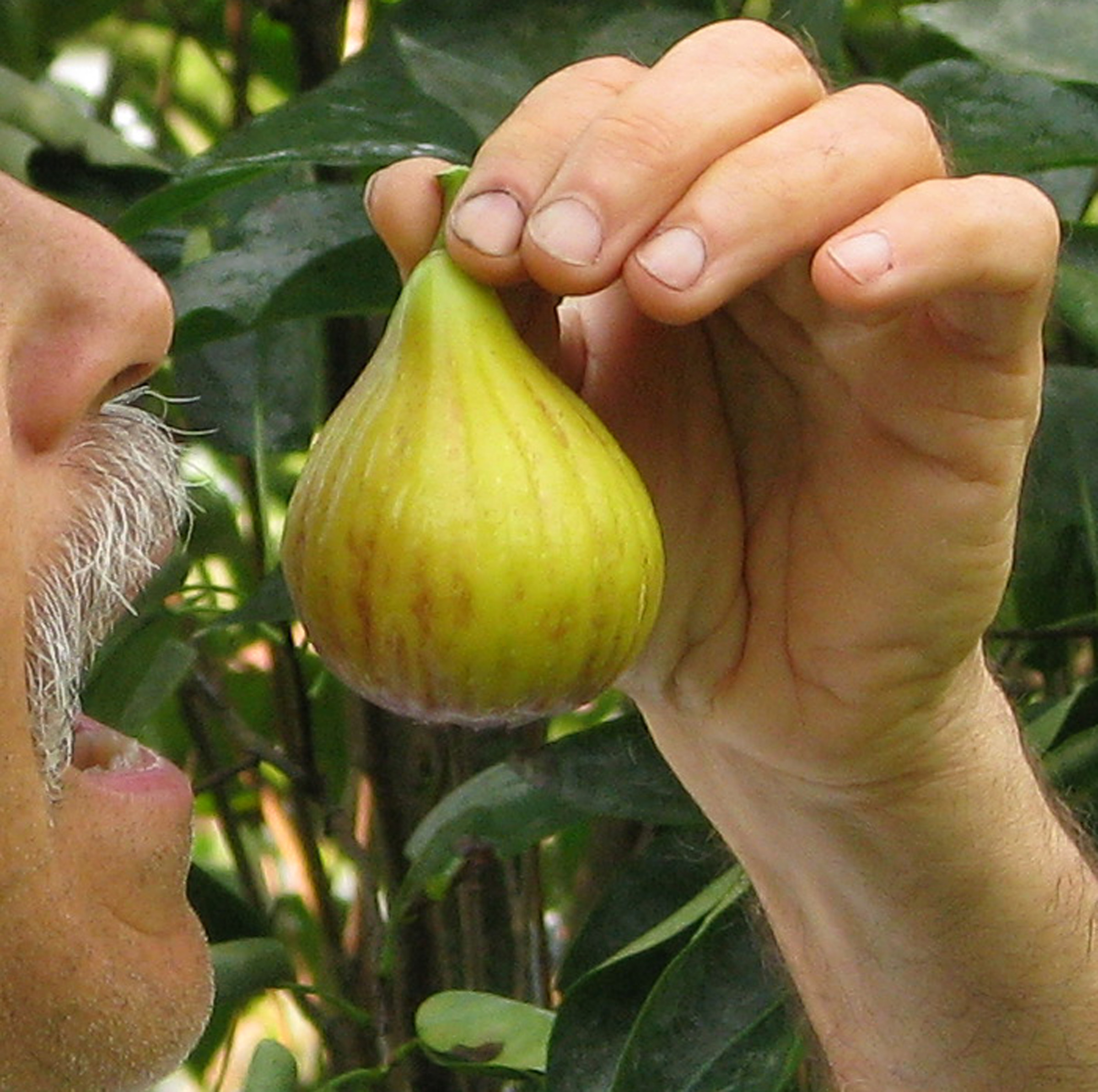
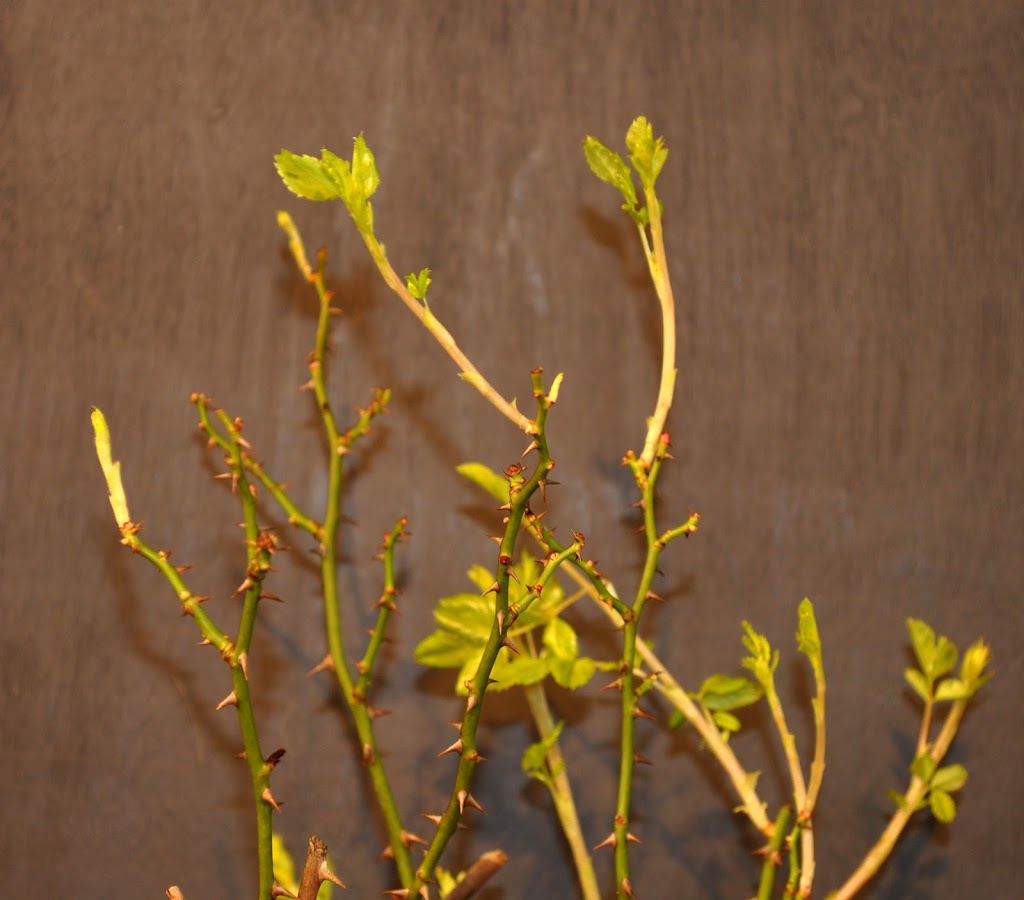

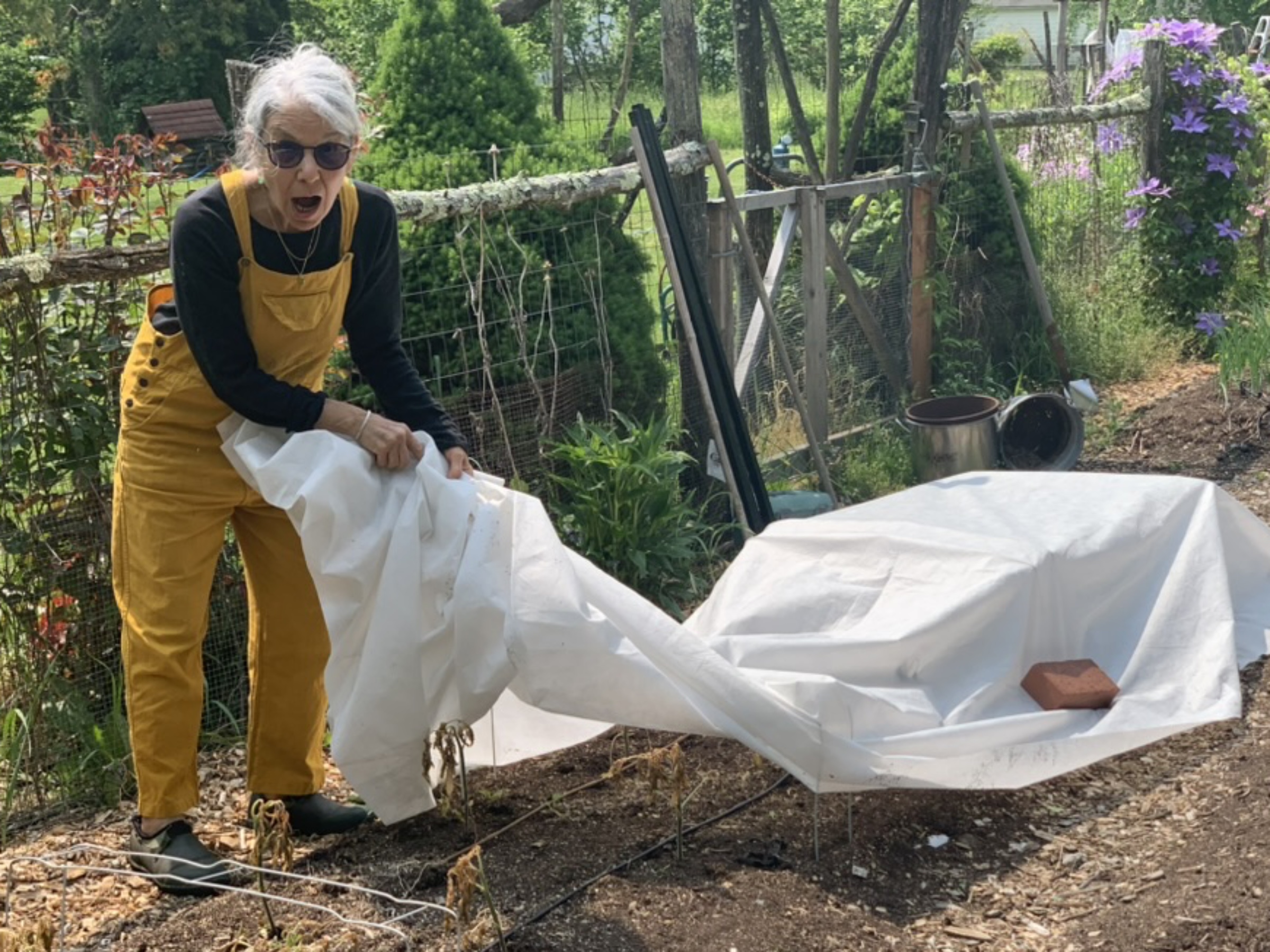
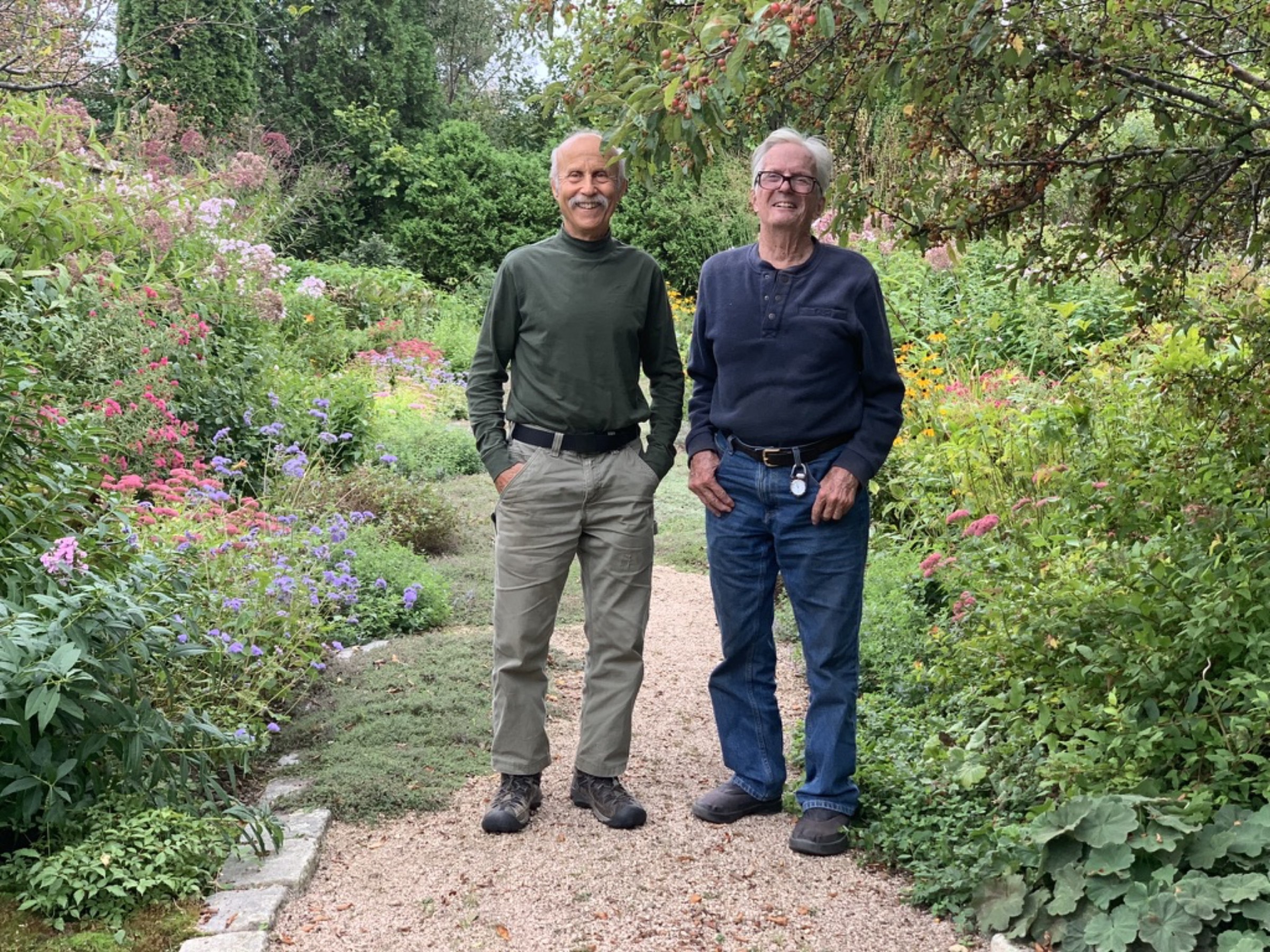
We have a wall that would be perfect for espaliering a fig, if they can be overwintered out of doors successfully. Will eagerly await the results of your experiment. (DH got the book for his birthday, so we’re that much further along.)
Whether or not overwiintering is successful depends on the kind of wall, the wiinter temperatures, and any other protection you offer to the plant.
Beautiful & so inspiring~ I say… espalier the Fig tree in all the growing houses here in Hudson Valley!
Enjoy every bite!
Bella Mange ~
What fig variety do you recommend Rochester, NY. ? Do you recommend I take it in for the winter?
Thanks,
Fred
Brown Turkey is a good od standby, and readily available. I’m still testing a number of other varieties. Yes, do take the plant in for winter unless you have some other method for protecting the stems from cold (methods covered in my book GROWING FIGS IN COLD CLIMATES).
Thank you . This was very helpful
Kathy
I am planning to overwinter several varieties in my unheated attached garage this winter Any tips on low temps ? I’m Iin NY zone 5 and not sure how cold it will get in the garage.
Will you be doing any other presentations ?
A low of about 25 degrees F should probably be the limit. Also important is the size of the pot because roots could also be damaged by enough cold.
I grow an unknown cultivar I got as a cutting from a neighbor, who got hers from another neighbor who commented that HER fig tree had survived 10 winters with total neglect. I nicknamed it “St. Louis hardy.” We are in Zone 6+, so admittedly not upstate NY, but we get snow and hard freezes every year.
My in-ground tree is now in its 3rd season. I cut it back in late fall but don’t wrap or mulch it. Last winter we had a prolonged cold spell, 0 degrees F for at least a week.
I regretted not securing a cutting as a backup, but….the tree resprouted vigorously and I’ve had my best harvest yet.
I put a few small Chicago hardy trees in ground, near Kingston earlier this year.
They are from 1 to 3 feet
I’m planning to cover/bury with compost. I also have burlap and some tarps. I could also access insulation board, plywood or a few old windows.
Any suggestions to give them the best protection?
I would cover them with something ore fluffy than compost, such as wood shavings, arborists wood chips, or leaves. Then put something waterproof over the whole thing. I don’t do any of this till around mid-December to give rodents time to find lodging elsewhere and to expose the trees to some cold to harden them off. I spray a rodent repellent (Bobbex) just before covering. The insulation board is also good.
I put a few small Chicago hardy trees in ground, in zone 5 upstate NY earlier this year.
They are from 1 to 3 feet.
I’m planning to cover/bury with compost. I also have burlap and some tarps. I could also access insulation board, plywood or a few old windows.
Any suggestions to give them the best protection?
I would cover them with something ore fluffy than compost, such as wood shavings, arborists wood chips, or leaves. Then put something waterproof over the whole thing. I don’t do any of this till around mid-December to give rodents time to find lodging elsewhere and to expose the trees to some cold to harden them off. I spray a rodent repellent (Bobbex) just before covering. The insulation board is also good.
Hi Lee, I am following your advices on figs in general. I have two fig trees; one is in bonsai pot about 6 years old, trained as bonsai. Others are several 3 year trees in container a bit like small fig forest. I am in Boston zone 6b, the latest I check. Every year until this one I would bring trees into my home in October and they would overwinter like tropical trees. They are doing well, but because they were not entering dormancy, they never bore fruit. This year I want to overwinter them in cold space. They are still outside with caveat that when temperatures go below high 20′, I would bring them in just for the night. I am bringing them in for good any day now, but my problem is that I do not have space that gets below about high 40s to about 50F, even on coldest winter days. My options are: a) my unheated staircase or b) basement which is not heated but has furnaces so temps in winter are about high 40s to about 50F as well. The only other option is to keep it outside on covered porch in rigid insulation box (R 5), which I built for my conifer Bonsai, but I am worried it will be too cold for figs. Any thoughts or suggestion would be appreciated. Objective here is to overwinter trees, keep them alive while allowing them to enter dormancy so they can, hopefully, bear fruit next year. Thank you. Edin
You need to monitor temperatures at the various locations you mentioned. In a small pot, I would keep the temperature above 25°F. Keeping plants on the dry side can also bring them into dormancy and hold them there to some degree. I think lack of sufficient growth rather than lack of dormancy is responsible for your lack of fruit. The plants can only grow so much within the confines of a small pot. Hopefully, they get annual root pruning and refreshing of soil. What the plants probably need is more growth.
I just ordered a Chicago Hardy tree but am thinking about canceling the order after reading your articles. I live in zone 5 so thought that would be the best tree variety for my zone. Should I try to order the Brown Turkey or one of the other varieties that you have instead – I’m looking for really sweet figs that would grow well in my zone; I can overwinter the tree in my unheated barn. If so, where can I order them as I’ve really only seen Chicago Hardy’s available.
Give Chicago Hardy a try; perhaps you’ll like it. Brown Turkey is the most common variety so should be widely available.
I have two 7 year old potted figs near Hartford CT. Black Mission just starting to ripen, Alma should start soon.
I’m looking to try to go figs from cuttings any wisdom that you could throw my way would be greatly appreciated.
Thank you Sir.
Thomas Schwartz
Patience. Otherwise, they’re easy by the usual methods.